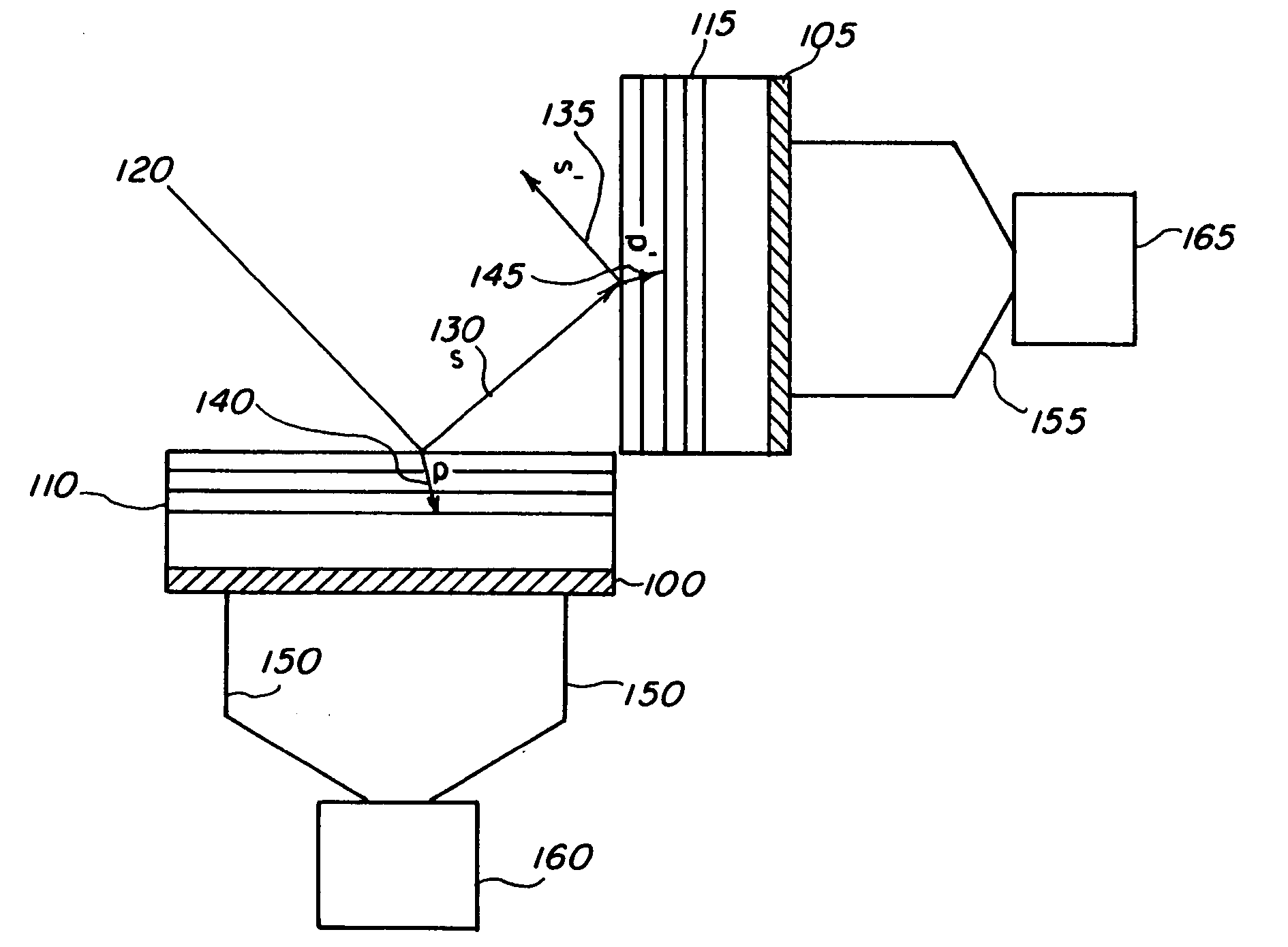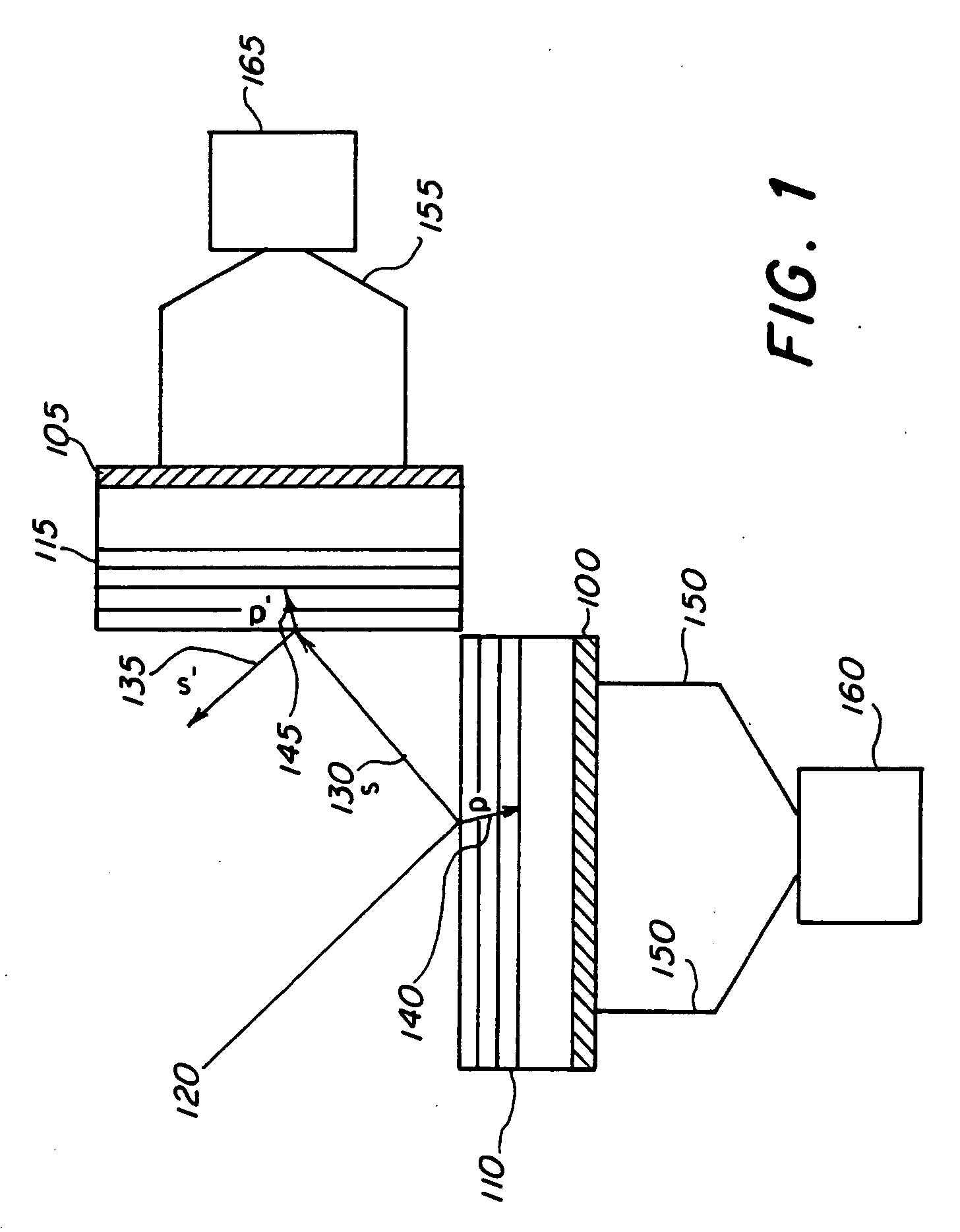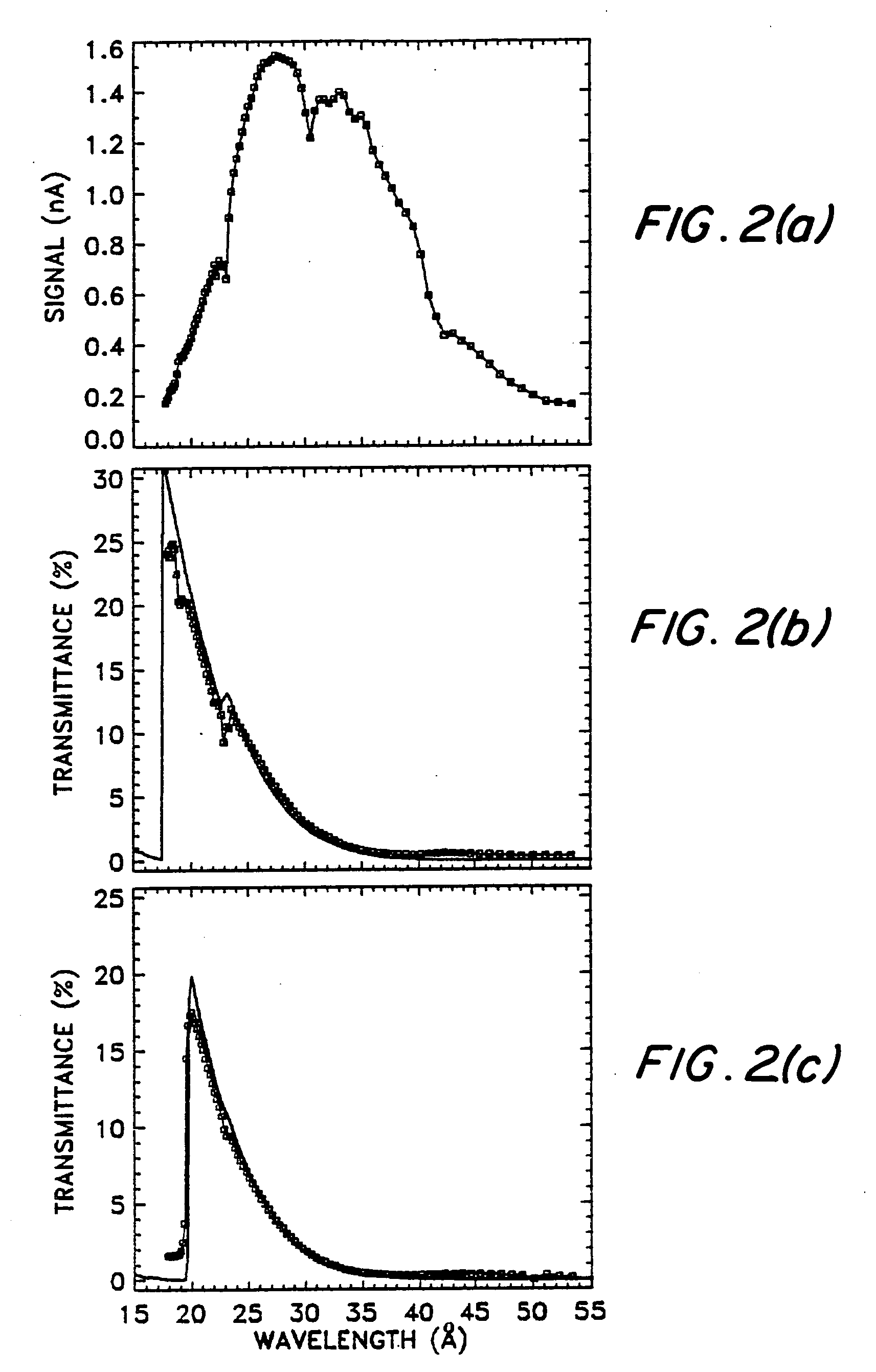Multilayer polarization sensor (MPS) for x-ray and extreme ultraviolet radiation
a polarization sensor and multi-layer technology, applied in the measurement of radiation intensity, instruments, x/gamma/cosmic radiation, etc., can solve the problems of reducing the sensitivity of 45 degree reflection techniques, affecting the sensitivity and accuracy of polarization measurement, and very low reflection of all materials at 45 degree incidence in the x-ray and euv regions, so as to enhance reflectance and transmittance, the effect of increasing the sensitivity in the x-ray
- Summary
- Abstract
- Description
- Claims
- Application Information
AI Technical Summary
Benefits of technology
Problems solved by technology
Method used
Image
Examples
Embodiment Construction
[0018] In the preferred embodiment, a multiple layer polarization sensor as shown in FIG. 1 includes a silicon photodiode 100 with a multilayer interference coating 110 and bonding wires leading to two electrodes 150. The silicon photodiode consists of a silicon diode that is sensitive to x-ray and EUV radiation. The multilayer interference coating is deposited onto the surface of the silicon diode using standard vacuum deposition or magnetron sputtering techniques. As x-rays or EUV radiation of less than 0.25 microwatts 120 are directed at the multilayer interference coating 110 at an angle of incidence of approximately 45 degrees, the multilayer interference coating 110 reflects the s polarization component of the incident radiation 130 and transmits the p polarization component 140. As the p polarization component is selectively transmitted through the MIC and is deposited in the underlying silicon photodiode 100, the photodiode generates a current that is recorded by connecting ...
PUM
 Login to View More
Login to View More Abstract
Description
Claims
Application Information
 Login to View More
Login to View More - R&D
- Intellectual Property
- Life Sciences
- Materials
- Tech Scout
- Unparalleled Data Quality
- Higher Quality Content
- 60% Fewer Hallucinations
Browse by: Latest US Patents, China's latest patents, Technical Efficacy Thesaurus, Application Domain, Technology Topic, Popular Technical Reports.
© 2025 PatSnap. All rights reserved.Legal|Privacy policy|Modern Slavery Act Transparency Statement|Sitemap|About US| Contact US: help@patsnap.com



